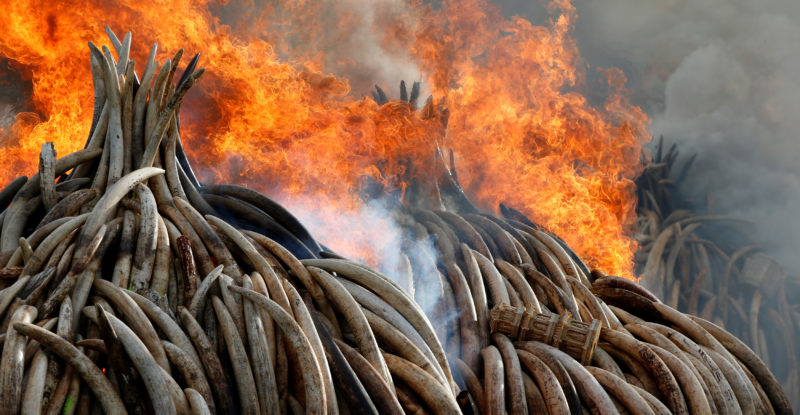Presently, there are less than 500,000 African elephants remaining in the while world reducing from 3,000,000 in the past years, this is according to the world wild life fund (WWF) which estimates that, 30,000 elephants are slaughtered every year with 80 killed every day and 17 killed every 17 minutes. It is forecasted that there could be extinction of elephants in the wild that will wipe them out from the eco-cultural heritage that drives tourism in a manner of decades basing at the rate which elephants are being decimated at present.
According to the tracking device documentary, the bloody path of ivory stripped from the carcasses and transported across Africa to be traded for money and ammunitions used to sustain campaigns of crime and terrorism were traced using artificial tusks implanted with the device.
More still, according to the national geographic documentary, warlords of ivory, has vividly told the harrowing story that terrorists and other extremist groups are highly funded and supported by the profits from the illegal sale of ivory, rhinoceros and other wildlife products.
In addition to that, the lord resistance army and the Ugandan rebel group were showed by the documentary as part of the scheme on 600-mile journey through the dense jungle from Congo’s Garamba national park in to the Central African Republic, to the Sudan and beyond regions.
It is noted that Kenya became the first nation to publicly destroy ivory in 1989. Since then, it has been recorded that at least 15 nations across the world have held public events to eliminate ivory stockpiles. Though the burns were political, they have served to raise global awareness, sending a singular message with a meaning to economies and ecological heritage.
Also, it is important to remember that when Kenya was torching its stock pile, it was purposely about saving elephants and not really about burning ivory at all. It is therefore part of a wider conservation strategy to eliminate demand for ivory and to put value instead of living elephants through burning of the stock piles. This was raised by the passionate Kenyan conservationist, Paula Kahumbu, in the Guardian.
In addition, it is estimated that living elephants are worth a great deal more than their tusks in that one live adult elephant brings in about US$1.6 million from tourism during the course of its life time which equals 76 times more than the price its tusks fetch on the black market.
In 2014 for example, leisure tourism in Kenya generated KSh238 billion (US$2.4 billion) for the Kenyan economy, and more than half a million people are employed, directly or indirectly, by the tourism sector, this was according to the world travel and tourism council.
It has been discovered that increasing the effectiveness of anti-poaching operations, improving law enforcement in demand countries, and reducing demand among consumers are the keys to stemming the flow of ivory and rhino horn from Africa despite all the arguments challenging the wisdom of destroying such a large haul even as the elephants face extinction.
Importantly still, Ivory trade should be addressed through social disapproval teaching and spreading the knowledge that ivory belongs to living elephants in the world and that no one should posses or commercially trade in ivory.
Conclusively, elephants should have a large loom in the convention on international trade in endangered species of wild fauna and flora (CITIE). More stigmas should be attached to buying the product and making it illegal to access these products made out of ivory such as carved figurines, bracelets and other baubles not forgetting the myth of medicinal value in rhino horns in Asia and elsewhere. With out this a wildlife safari in Africa will seem meaningless with out African gentle giants and our children’s children will never have a chance to see them. So let hand and fight a good fight against ivory trade.





